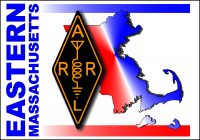May 21, 2005
NTS Role In Disaster Response
NTS Expansion in Disasters
In day-to-day operation, the National Traffic System passes routine messages around the country. in its emergency role, the NTS is dedicated to disaster communication on behalf of ARES. NTS is capable of expanding its cyclic operation partially or fully depending on the level of need. The normal cycles can be expanded to handle an increasing volume of messages with greater speed. In extreme cases, the cycles can operate continuously. This requires all nets to be on the air full time, with stations designated for liaison operation replacing each other as stations are dispatched to the higher or lower nets with which they make liaison.
Managers of NTS nets at local, section, region and area levels are directly responsible for activation of their nets at the request of ARES or NTS officials at lower levels.
Section Traffic Manager and Section Net Manager Roles
The STM and specific section net managers may be contacted during a disaster situation by the Section Emergency Coordinator to activate specific section nets, whether NTS or not, either to provide section-wide contact or, in the case of NTS nets, to provide liaison with the “outside.” It is important that net managers have some means of activating their nets at any time. Net members should automatically monitor the net frequency in the event of a disaster. Some net stations at critical locations can be activated by using the telephone or local repeaters if these are available.
The STM and section net managers make contact with NTS region net managers in the event that communications connected with the disaster cross section boundaries, and may recommend extraordinary activation of the region net. There should be some prearranged method of contact for this purpose.
Specific net stations are designated to conduct liaison with the NTS region net, either through another section net or directly. This is the responsibility of section officials, not the region net manager.
General Policy for all NTS Operators
NTS operators should be self-alerting to disaster conditions that might require their services, and should report into an appropriately assigned net or other function without being specifically called upon. That is, the assignment should have been worked out with the net manager in advance. If the operator cannot answer the question, “If I hear of a disaster condition, what should I do?” they should seek an answer to it through their Net Manager. It may be as simple as “Report into the X Net on X frequency.”
If the operator concerned is highly specialized, it might be “Report to your TCC director in the X net on X frequency for a special assignment.” Such an assignment might be an extra TCC function, or it might be as a functionary in a “hot line” point-to-point circuit needing special abilities or equipment.
Although every net member should have a specific assignment, they must also remain flexible enough to change assignments when the need arises.
Health and Welfare Traffic Handling
One of the biggest challenges during a disaster is handling so-called “health and welfare” messages, or as the American Red Cross calls them, “Disaster Welfare Inquiries” (DWI). The ARRL-recommended precedence for this type of traffic is W or “Welfare,” and refers to either an inquiry as to the health and welfare of an individual in the disaster area or an advisory message from the disaster area that indicates all is well. The Red Cross at first attempts to handle DWIs through normal communication channels. If the volume of traffic to and from the disaster area is large, or if normal channels are disrupted, the NTS may be called upon to assist with the overload.
The NTS policy is to handle as many DWI messages as possible, but to adhere to its precedence. Higher-precedence traffic must be handled first, and welfare traffic should be handled only when the circuit is free. Routine (R) traffic is not normally handled by an NTS net operating under disaster conditions, because usually the net is involved to capacity with higher precedence messages. However, should a disaster circuit be temporarily available, routine messages can and should be passed until the circuit again becomes occupied with higher-precedence traffic.
Maintain close contact with the Red Cross or the Salvation Army as appropriate, since most inquiries are handled through these organizations. Civil preparedness organizations may also set up procedures for handling such traffic.
In a widespread disaster, it is seldom possible to handle all the welfare traffic with efficiency and dispatch. At times, DWI traffic piles up alarmingly, even to the extent that much of it is never delivered. In these cases, high volume modes should be used rather than slower phone and CW. In the past, special RTTY, ASCII, AMTOR, fax, and packet circuits have been established with great success. PSK31 and similar new digital modes hold great promise for high volume, high accuracy traffic handling as well.
Until or unless means for handling DWI traffic are established, it is usually wisest not to accept it from the general public, or to do so only with an explicit understanding that chances of delivery are not guaranteed or even good.
Jim Ward N1LKJ STM-EMA

